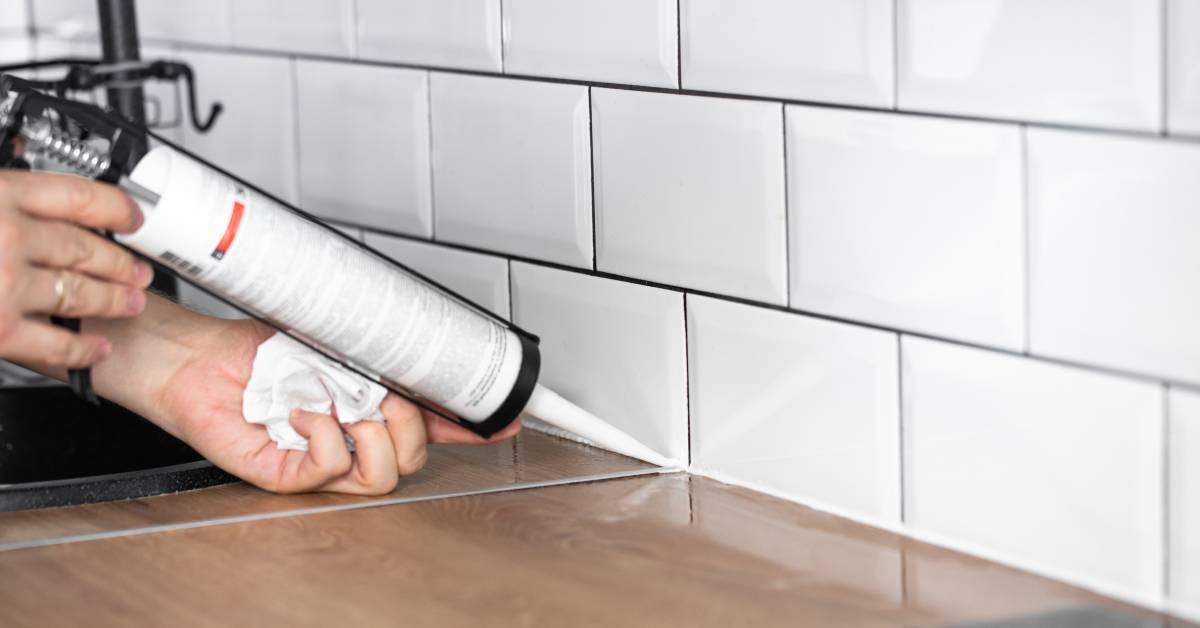Innovations That Have Changed Material Handling Equipment
Material handling has evolved with groundbreaking advancements that enhance efficiency, safety, and productivity in industrial operations around the world.

FREE SHIPPING FOR ALL ORDERS ABOVE $250 | Except LTL Shipments
Material handling has evolved with groundbreaking advancements that enhance efficiency, safety, and productivity in industrial operations around the world.
Deciding between manual and automatic tile cutters? Compare their features, efficiency, and ease of use to choose the right tool for precise tile cutting.
Prevent errors in natural stone projects and achieve flawless results and long-lasting pieces with the following advice on proper techniques and care.
Caulk and sealant are common supplies for polished, durable finishes in construction and home improvement. While they’re similar in many respects, they have key distinctions that separate their use for certain applications.
If you’ve ever wondered what the differences between caulk and sealant are, you’ve come to the right place. In our comparison guide, we’ll break down the basics of both materials, their applications, and their key distinctions.
Caulk is a flexible material for sealing gaps, cracks, and joints in various structures. Typically made from silicone, acrylic, or latex, it serves as a protective barrier to keep out moisture, air, and even pests. Caulk is an essential tool in construction, home improvement, and maintenance, ensuring durability and energy efficiency in both residential and commercial spaces.
Caulk is a flexible and versatile material with countless uses around the home and on projects. The most common uses for caulk include:
Whether indoors or outdoors, caulk helps keep your spaces secure and well-maintained.

Like caulk, sealant is a flexible material that forms a protective block against the passage of fluids, air, or other substances through surfaces, joints, or openings. Homeowners, renovators, and construction experts apply sealant in areas that require a durable, watertight barrier.
Sealants can bond to a variety of surfaces, including concrete, metal, glass, wood, and plastic, ensuring compatibility with different materials. Unlike caulk, sealant provides superior elasticity and longevity, enabling it to withstand significant movement, extreme weather conditions, and temperature fluctuations without cracking or losing its effectiveness. This adaptability makes sealants ideal for sealing windows, doors, roofs, and gaps in vehicles or industrial equipment.
Sealants are versatile solutions for addressing various sealing and bonding needs across multiple industries. Common uses for sealants in home renovation or construction include:
By offering reliable performance and broad usability, sealants remain an essential component in maintaining efficiency and safeguarding structures.
As sealants and caulks are so similar, they provide many of the same benefits. Some of the advantages of caulks and sealants are their versatility, protection, and simple application process.
Sealants and caulks can adapt to a wide range of applications, making them highly versatile. From residential and commercial buildings to automotive and industrial equipment, they provide reliable solutions to seal gaps, prevent leaks, and enhance structural integrity. This adaptability ensures that they are a go-to product for professionals and homeowners alike.
Using sealant or caulk significantly improves the durability of structures and systems. By creating airtight and watertight seals, they protect against environmental damage such as moisture, extreme temperatures, and UV exposure. This additional layer of protection minimizes wear and tear, extending the lifespan of the materials.
Sealants and caulks contribute directly to energy efficiency by preventing drafts and leaks in homes and buildings. Proper sealing minimizes energy loss, reducing heating and cooling costs. Over time, this saves money while maintaining comfortable indoor environments, ensuring a return on investment.
One of the key advantages of sealants and caulks is their ease of use. Available in convenient packaging and a range of formulations, professional and DIY homeowners can apply these materials quickly and easily. Their straightforward application process makes them an accessible and practical solution for sealing needs across various projects.
We’ve covered what caulk and sealant are and their advantages, but what are the differences between the materials? Some of the key distinctions to keep in mind when evaluating the materials are their flexibility, durability, and their material composition.
![]()
One of the main contrasts between caulk and sealant is their flexibility. Caulk is rigid once it cures, making it ideal for applications where minimal movement is expected, such as sealing baseboards or crown moldings.
Sealant, on the other hand, offers significant flexibility even after curing, allowing it to accommodate joint movement. This makes sealant the better choice for areas subject to expansion or contraction, like windows and outdoor joints.
Another key distinction lies in their durability. Caulk is generally less durable than sealant and is best for interior applications with limited exposure to moisture or extreme weather.
Conversely, sealant can withstand harsher conditions, offering long-lasting performance in environments where it’ll be subject to water, UV rays, and temperature fluctuations. This makes sealants ideal for both indoor and outdoor projects requiring extra resilience.
Finally, users must also consider the purpose of the caulk or sealant and its material composition. Caulk is a latex or acrylic-based material and works well for aesthetic finishing touches where paintability is important. Sealant, however, is silicone- or polyurethane-based, providing superior water resistance and elasticity for creating airtight and waterproof seals.
Since they’re so similar, it can be difficult to decide whether caulk or sealant is ideal for your project. Factors to consider when choosing caulk or sealant include the environment of the project, your aesthetic needs, and potential maintenance.
If the project will expose the caulk or sealant to extreme temperatures, continuous moisture, or heavy movement, a sealant is typically the better choice due to its flexibility and durability. Caulk, on the other hand, is more suitable for interior applications where these conditions are less of a concern. Selecting the right product for the environment will ensure long-lasting performance.
Consider also whether you will need to polish or paint the material upon completion of the project. Since you can paint caulk to match the surrounding surface, it’s ideal for interior tasks such as filling gaps along baseboards or crown molding. Sealant, while highly functional, is not typically paintable and often leaves a glossy finish.
Caulk is also generally easy to work with, and after application, you can smooth it neatly and with minimal effort. Naturally, this makes caulk a favorite for interior work.
Since sealant is stickier and more flexible, it requires more careful handling and application. However, its resilience means it will require less maintenance and application in the future under demanding conditions.
Choosing between caulk and sealant depends on your project needs, with caulk offering paint-friendly properties and sealants providing waterproof durability. Whether it’s a minor repair or a major renovation, using the right product ensures lasting results.
At Detroit Diamond Tools, our extensive inventory includes all kinds of materials for home projects and renovations, from caulk and sealant to epoxy coatings for countertops. Explore our selection to find the ideal tools and materials for your task today!
Caulks and sealants are essential in areas exposed to moisture, such as bathrooms, kitchens, and exterior siding. Applying caulk around sinks, bathtubs, showers, and windows creates a watertight seal, preventing water from seeping into gaps and causing mold, mildew, or structural damage.
The best exterior caulks are silicone or silicone-latex. These products are excellent for caulking windows and doors. They can be used on trim and siding, as well.
Silicone caulk and silicone sealant are similar but serve slightly different purposes. Silicone caulk is typically used for smaller cracks and joints where flexibility and paintability are important. Silicone sealant, on the other hand, is specifically designed for areas exposed to water, temperature extremes, or outdoor conditions, offering superior durability and long-lasting flexibility.
We inventory products you see on our site
On all ground shipping Items
We'll beat the price from any competitor
Dedicated sales & support team
